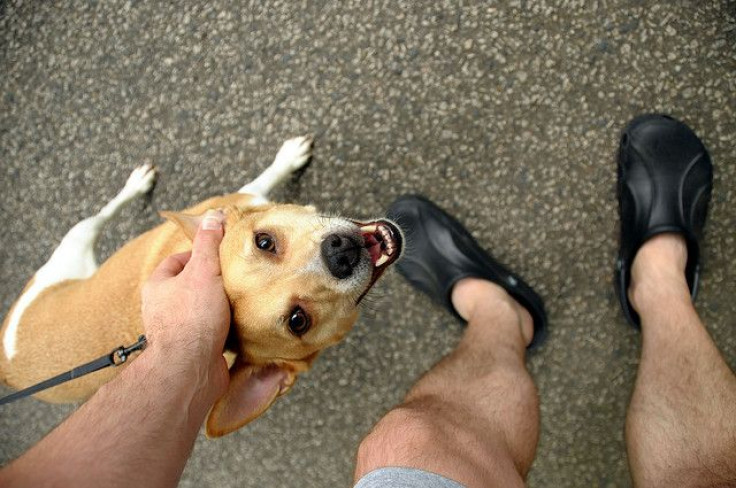Oxytocin Forms Basis Of Human-Pet Relationship In Same Ways As Parent To Child

Kids don’t always make it easy to love them. They may win our affection with their big eyes and innocent questions, but they also throw fits and get fussy. Dogs, on the other hand, will cozy up to you even if you’re a cold-blooded murderer, and we love them for it.
A new study from Harvard Medical School finds these types of love are actually fairly similar on a neurological level. It turns out our brains, in their tireless mission to read and interpret the world, don’t spend much effort putting lovable faces into different categories. We see a cute, smiling mug and our hormones surge, making us feel just as close to that chubby infant face as a golden retriever’s grin.
"Pets hold a special place in many people's hearts and lives, and there is compelling evidence from clinical and laboratory studies that interacting with pets can be beneficial to the physical, social, and emotional wellbeing of humans," Lori Palley, study co-author and researcher at Massachusetts General Hospital’s Center for Comparative Medicine, said in a statement.
To get a better understanding of how our brains react to both infants and our four-legged friends alike, Palley and her colleagues collected a small pool of subjects to look at images of their kids and pets inside an fMRI (functional magnetic resonance imaging) scanner. The scanner measures brain activity via increasing or decreasing levels of blood flow to each region. When one region lights up over another, generally that signals people are engaging that area.
Fourteen mothers participated in total. The researchers found when they looked at pictures of other people’s dogs and children, not much happened. But when they saw their own pets and kids, a brain region known as the substantia nigra/ventral tegmental area (SNi/VTA) lit up. This region is involved with bond formation, and when paired with the release of oxytocin — frequently dubbed the “love hormone” — we begin to feel closer to those around us. Hugging produces the same effect.
Interestingly enough, another region known as the fusiform gyrus, responsible for facial recognition, activated more often when people looked at pictures of their dogs than of their kids. Basically, in one sense, we know our dogs better than we know our own blood. But the researchers offer an explanation for that otherwise depressing finding.
“We think the greater response of the fusiform gyrus to images of participants' dogs may reflect the increased reliance on visual than verbal cues in human-animal communications,” said Dr. Luke Stoeckel, co-author from the MGH Department of Psychiatry.
It’s one thing to interact with your child and know she’s hungry because she points to her mouth or just flat out tells you. With dogs, we have to put on our detective hats and decode their eager faces to know what they want. More is demanded of us, so our brains work harder. Eventually, the behavior becomes engrained, so that whenever we look at the dog’s face our fusiform gyrus immediately takes over.
Brain activation still has its limits. Evolution would prefer we keep our own species alive before our furry friends, and this was reflected in the levels of activation the research team discovered. While the same basic networks lit up in response to the two pictures, subjects’ nucleus accumbens, another region responsible for feelings of closeness, showed far less activation for their dogs than their children. Though, the team says the result may indicate variance on the trend because they expected activation for children to spike, rather than for the other to decline.
Future tests will be designed to see how other parent roles stick to the trend, such as adoptive parents, women without children, and fathers. "Since fMRI is an indirect measure of neural activity and can only correlate brain activity with an individual's experience,” said co-author Dr. Randy Gollub, “it will be interesting to see if future studies can directly test whether these patterns of brain activity are explained by the specific cognitive and emotional functions involved in human-animal relationships.”
Source: Stoeckel L, Palley L, Gollub R, Niemi S, Evins A. Patterns of Brain Activation when Mothers View Their Own Child and Dog: An fMRI Study. PLOS ONE. 2014.



























